Details of the Guggenheim Helsinki Stage Two finalist concepts
By Bustler Editors|
Monday, Apr 27, 2015

Related
The big reveal of the winning Guggenheim Helsinki concept is a matter of weeks away, so start making those predictions now. In the meantime, the competition continues to tease us with the Stage Two versions of the six finalist proposals.
Back in January, the finalist teams visited Helsinki to receive further technical info about the Stage Two brief as well as feedback on their initial proposals. Since then, each of the teams -- who are already revealed but remain unmatched to their proposals -- spent the last few months further developing their concepts.
Check them out below.
GH-121371443
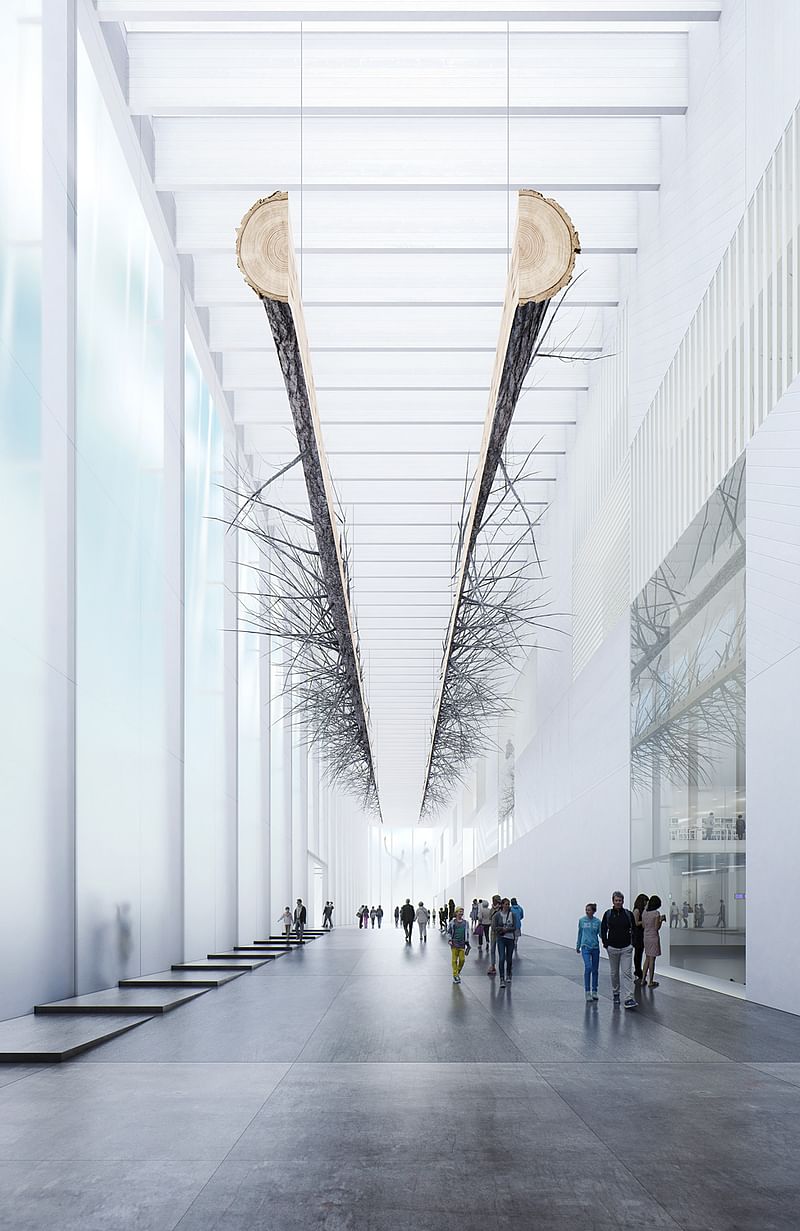
Project description from competitor: "quiet animal - Our proposal takes the form of a Helsinki city block rotated to the harbourfront. Seven timber-clad galleries are stacked over a basement and three levels flanked by administration and open-format halls. Public spaces are formed between these and an intelligent textured glass skin wrapping the entirety to precisely diffuse light, translucent below, and transparent above. The lower galleries join as needed, while the third floor is one super-space. The variety enables a wide range of curatorial approaches. The museum's three entrances are arrived at by new cobble and gravel walking routes. Centrally a wide, convivial staircase helps visitors wayfind intuitively. 'Art Kioski' annex for young Nordic art twins the historic Kauppahalli while a sculpture garden is enclosed to the south. In 1800s Helsinki city blocks were named after wild animals. The proposed new block will have the tactile familiarity of a pet's fur. So we call this proposal 'quiet animal'."
GH-76091181
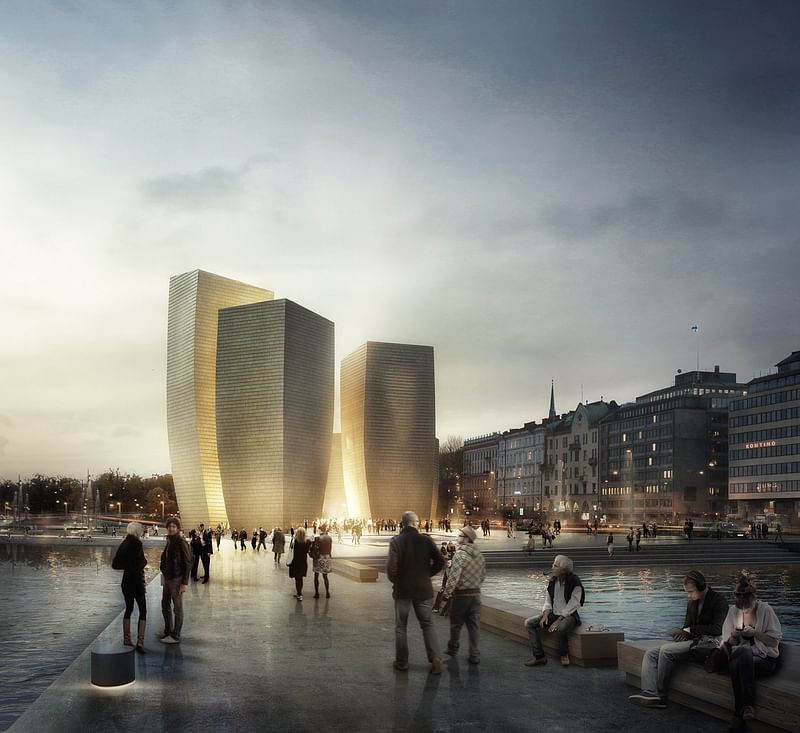
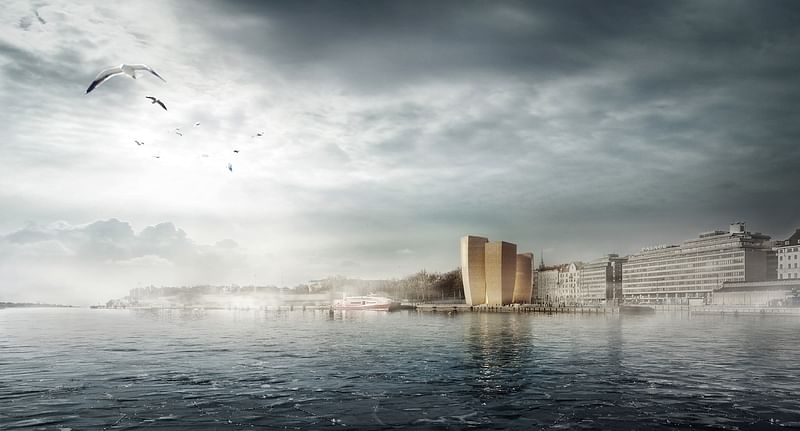
Project description from competitor: "Five timber towers huddle together at the edge of the Baltic Sea, forming a shimmering beacon on the shoreline. Multiple forms produce an interplay of light and shadow that create an inspiring, enticing atmosphere, while glimpses of in-between spaces beckon visitors from near and far. The warmth and familiarity of the wood shingle façade creates a sense of belonging with the landscape, while an ethereal quality is expressed through its subtle oscillation, ruffling, as though brushed by the winds of the sea. Helsinki Five seeks to engage a sense of discovery that is deeply informed by art, instigating close encounters between artwork and viewer, between art-maker and art-making. It is a play of hide and seek, light and dark, wide and close, in and out."
GH-5631681770

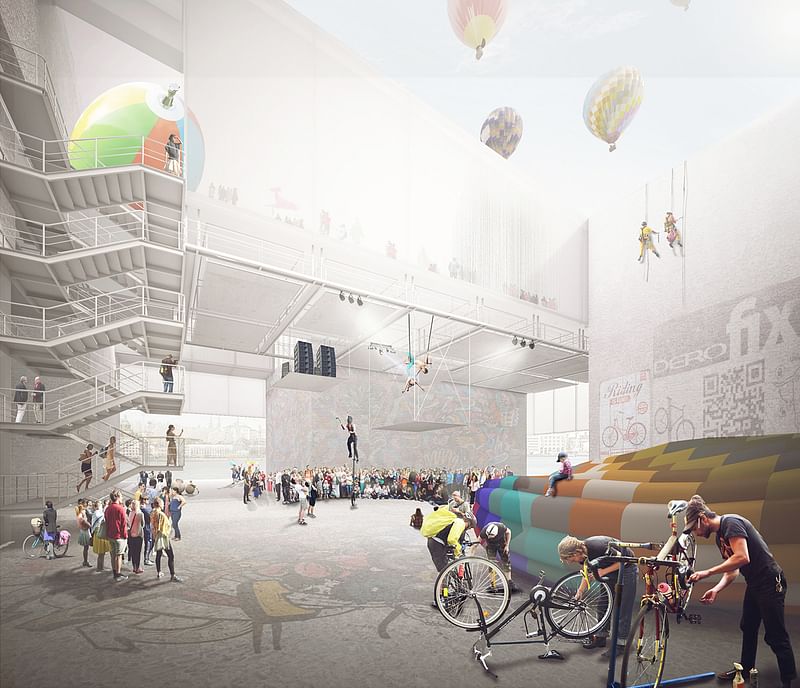
Project description from competitor: "The use of Street Space forms the basis for basic social discourse, from political gatherings to Art creation or community expressions. While an increasing “unofficial” art was blooming in the streets from the second half of the XX Century, Museums have been historically focused in Gallery Art, excluding Public Space production. Future is “bottom up”. Museums have to change from institutions where information was directed in only one way: towards the viewer into institutions that are increasingly creating conversations with the citizen, prioritizing the human scale of a space over its merely sculptural value. Due to its particular climatic conditions. There are 2 cities in Helsinki. Summer Helsinki and Winter Helsinki. We propose a Strategy that could offer back to the City an Interior Street, Public Space at no additional cost to be used also the 6 cold months of the year. The combination of 2 programs -The Museum -Gallery Art- and The Extra Space -Street Art- in a single building allows us to explore the relationship between 2 complementary worlds. Using both factors, we had the chance to add, subtract, divide…We decided to multiply."
GH-5059206475
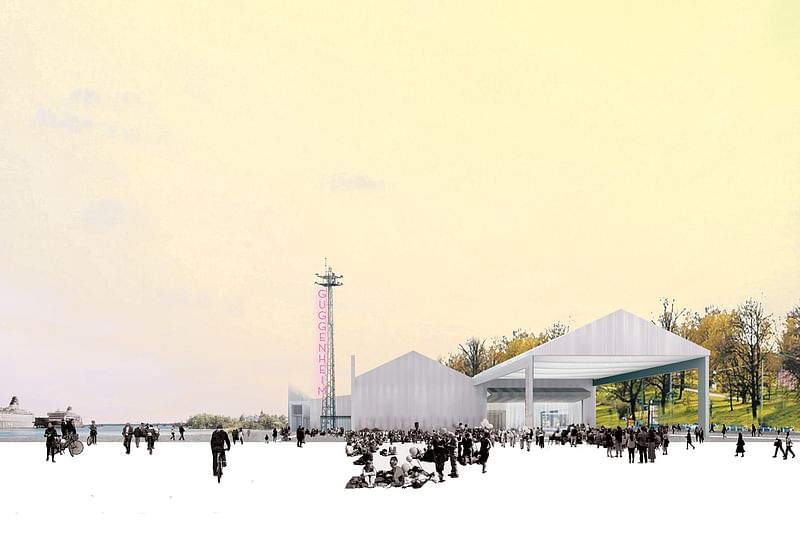
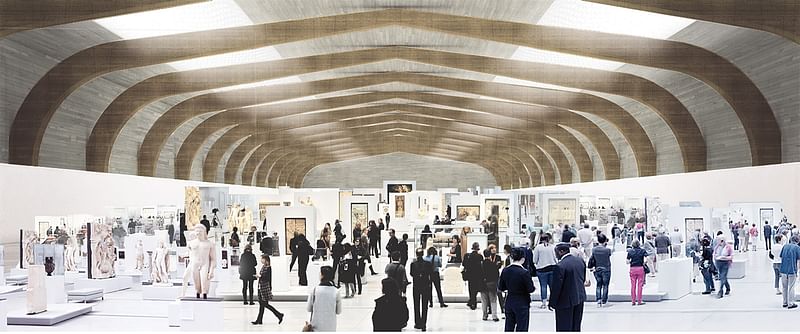
Project description from competitor: "Helsinki is a city of interiors. Due to its extreme climatic conditions, Helsinki’s civic society blossoms indoors. Our proposal for the Guggenheim Helsinki, 47 Rooms, extends this network using the architectural technologies that construct Helsinki’s interior citizenry: i.e. walls, doors, windows, and the machinery that defines atmospheric conditions. 47 Rooms contains nine rooms of 20x20m, twenty-seven of 6.5x6.5m six of 10x10m, two of 120x4m and one of 32x120m and three outdoor rooms. A multiplicity of chambers and climatic conditions will allow various museums to live together in the same building. The museum is ready to welcome individual visitors, families, local art scene, high school visits, young audiences, international tourists, groups of friends… 47 Rooms is a machine to provide singular and ever-changing experiences by opening and closing doors to different climates. 47 Rooms extends the logic through which Helsinki’s population already tempers their more intimate public spaces. Imitating the logic of the Sauna, each room’s final climatic conditions include certain degree of negotiation between the institution and its visitors. 47 Rooms means a strategic shift on Guggenheim’s identity: it embraces Helsinki focusing on interior climate rather than external appearance.
GH-1128435973
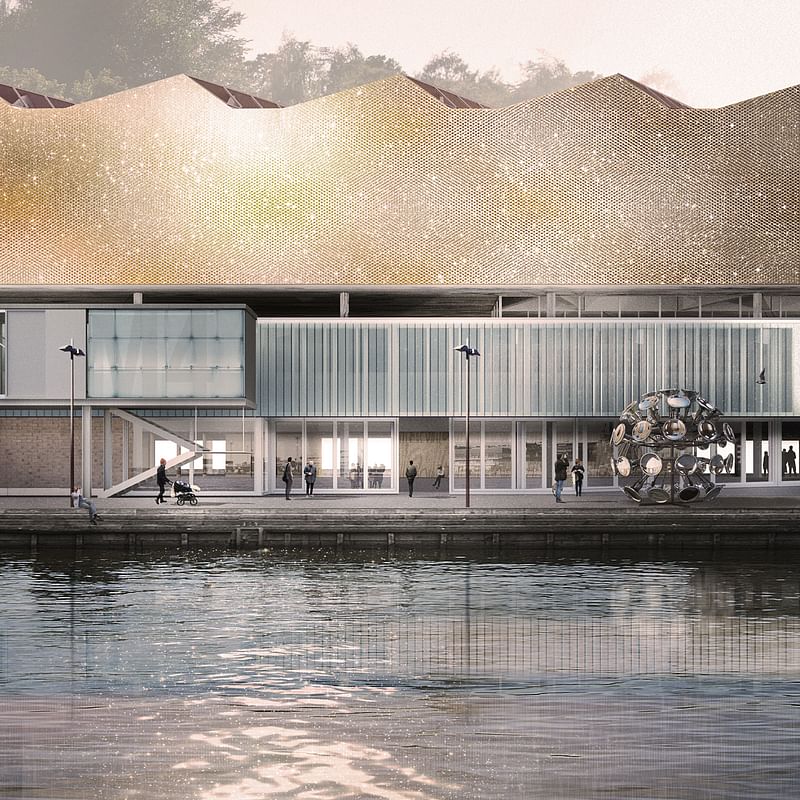

Project description from competitor: "The museum is composed of two spaces - one for exhibitions, the other a public forum - that come together in a dance involving art and the city, gradually engaging in multiple movements, from a pas de deux, to a pas de trois, etcetera. One space of the museum is on the dock level of the port facility, acknowledging the site’s industrial function as a vital memory for the new ensemble. Part gathering place, part community center, part incubator for innovation, it is conceived as a social commons within the city. The other space of the museum houses art exhibitions. Hovering in the air, it offers a place for contemplation, with large open galleries, complementing its companion space below. Greater than the sum of its parts, the museum generates multiple relations among people, architecture, and the arts. With this, the Guggenheim Helsinki can engage a broad constituency of stakeholders, benefiting not only the arts, but the public at large."
GH-04380895
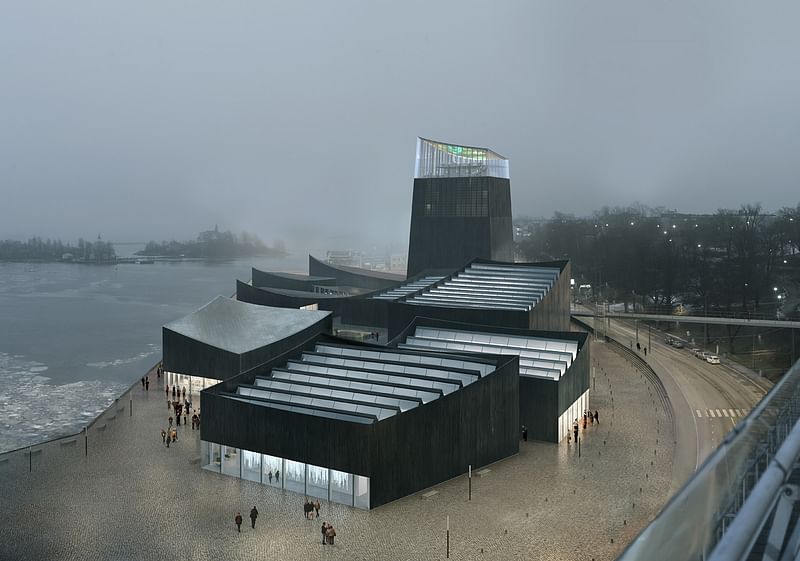
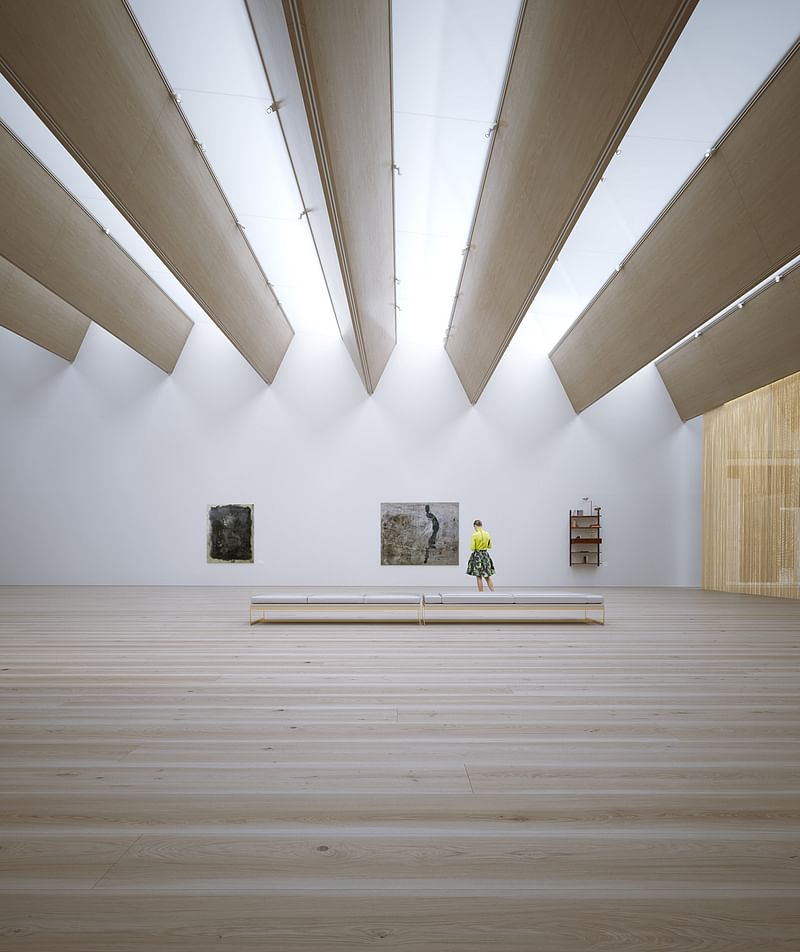
Project description from competitor: "The design of the Guggenheim Helsinki and its woven landscape are based upon a sensitive and sympathetic approach to the context and nature of Helsinki. The design encourages people to flow within a new cultural core that is linked to the rest of the city, through the port promenade and the pedestrian footbridge to the Observatory Park. This flexible access welcomes not only the visitors but also serves as a key cultural destination for the community. The museum skyline is composed by independent volumes, highlighted by a landmark tower. These fragmented art exhibition spaces allow strong integration with outdoor display and events, while the lighthouse offers a new perspective over the city. This new museum concept together with the charred timber façade echoes the process of regeneration that occurs when forests burn and then grow back stronger."
Previous Guggenheim Helsinki articles.
Check out all the finalist concept boards in the thumbnails below.



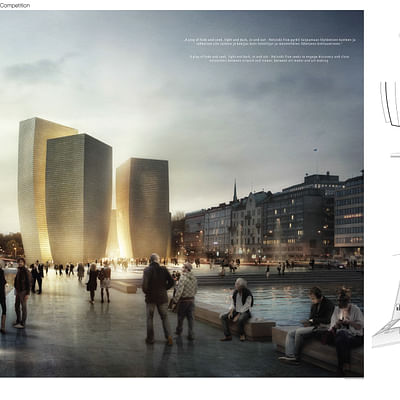



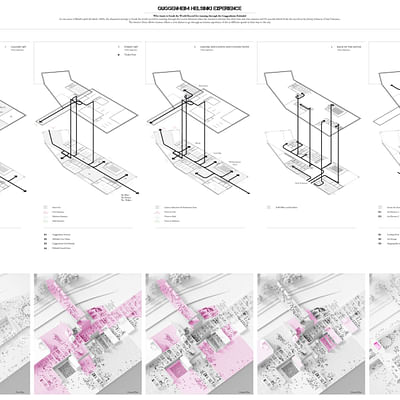
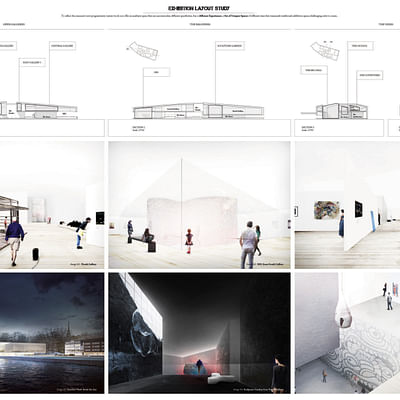






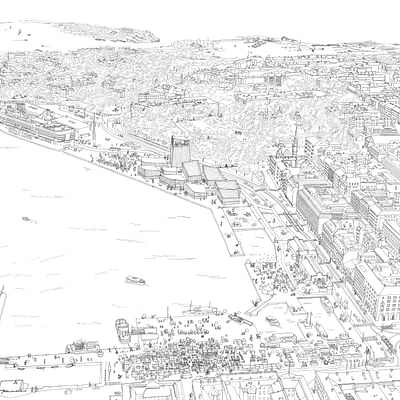



Share
0 Comments
Comment as :